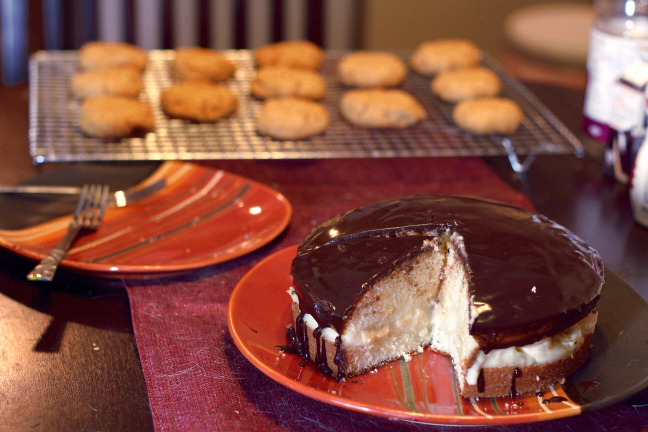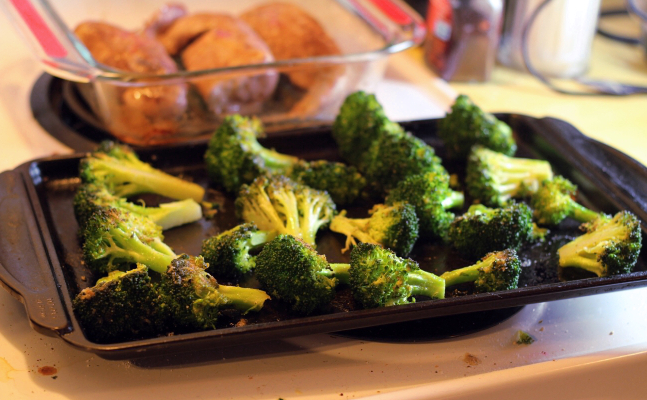
Astonishingly, it was just recently that I hear about the DASH Diet in an e-mail. It sure has been getting a lot of publicity lately; being posted about on popular websites such as Livestrong, The Mayo Clinic, WebMD, and even our friendly neighbourhood quack, Dr. Oz (I’m not sure I can call a surgeon a quack, but his TV show and websites have certainly been called out on its quackery numerous times).
So, does the DASH diet have any merit, in my opinion?
Yes, absolutely.
It also has its downsides, as does any diet.
The DASH Diet (Dietary Approaches to Stop Hypertension) is just as it says in its namesake, a diet created for the purpose of preventing and helping to reverse hypertension, aka high blood pressure. The DASH Diet is known for being rich in fruits, vegetables, whole grains, and low-fat dairy, while being low in red meat, added sugars, and added fats. It’s recommended by both the US National Heart, Lung, and Blood Institute, as well as the USDA.
It has some studies associated with it, some of these studies being 14 years old, which is odd, considering the not-until-recently blow-up of the diet on many health pages. One such study says that the DASH diet is even more effective while subsequently lowering sodium intake, leading to a reduction in blood pressure from 7.1 mm Hg in those without hypertension, and 11.5 mm Hg in those for whom it is already diagnosed. Add exercise and caloric control, and you can expect to reduce yet another 2.4 – 5 mm Hg. Interestingly enough, the diet can also be beneficial in preventing bone loss and can decrease risk of kidney stones.
What are the cons, then, you might ask?
Personally, while I think these are extremely good outcomes, and I, for the most part, am a supporter of the diet; I find some of the diet examples to be slightly lacking. Such as this one I found online:

For example, included in each ‘breakfast’ is a glass of juice. As we all know, most juices these days are pasteurized, filtered, and stripped of both their fibre and nutrients; the only benefit being Vitamin-C in the added-back form of ascorbic acid. In that case, you would likely get a similar benefit from drinking Vitamin Water (not that Vitamin Water is healthy for you either), as I highly doubt most people juice their own fruits or vegetables.
I also frown slightly at the addition of ‘jam’ on the whole-wheat English muffin. I know we can’t all be perfect, and not everyone can give up their vices; but why not list double-fruit jam, no sugar-added jam, or fruit-sweetened jam? There are many alternatives out there and you need not necessarily put a combination of pectin and pure white sugar on your bread anymore. Why not just spread your English muffin with low-fat cream cheese and top it with a handful of berries? The diet is trying to be ‘low in added sugars’ but clearly contradicts itself within the first meal of the day!
In addition to this, it lists ‘dinner roll’ as an additive to lunch. What sort of dinner roll? White bread is about as nutrient-dense as cardboard. I’d prefer they specified whole-wheat, whole-grain, or substituted it with a better alternative like Squirelly or Ancient Grains bread; bread that has 5g each of fibre and protein per slice. Then again, it’s not realistic that people will get used to such ‘dense’ bread, or even enjoy it .. but when you’re looking at fighting something that leads to heart disease here, do you really deserve to be half-assed in your examples?
They also have, vaguely, ‘chicken waldorf salad’. That is fine and good, but full-fat mayo straight from the container, stabilized for shelf-storage, is not exactly the best for you either. I feel like this dietary plan is going for ‘good enough’ rather than ‘best’, sadly.
In the dessert section, we see apple crisp. Apple crisp contains fruit, it must be healthy, right? Well, that all depends on how it’s prepared. Some people prepare it like sliced, baked apples with a small smattering of granola. Others prepare it like a calorie bomb with half a cup of added butter and sugar. Frozen yogurt, as well, probably contains added sugar. While it certainly has less fat; why not have it with a side of honey-sweetened low-fat Greek yogurt; or heck, regular sugar-free yogurt? At least then you can control how much sugar is in it. I know I am probably sounding like a dietary nazi, while I myself like to practice moderation; but again, you can’t tell someone that their potentially diet-ruining dessert is suddenly okay, even saving their life.
I do, however, applaud the addition of olive oil for the second day’s dinner; and the more simple dessert. In contrast, I shudder at the ‘smothered in cranberry sauce’ for the lunch of the day. How many sugar-sweetened condiments or additives do we really need to make this diet palatable? Because the cranberry sauce that comes out of a can in the form of a loaf is certainly not something people should be adding to their diet too regularly, nor in ‘smothered’-level amounts.
Also, why the cinnamon raisin English muffin for day 2? Why the obsession with English muffins? Most cinnamon raisin breads/English muffins/bagels are certainly NOT whole wheat. They often also have added sugar. While they are okay to have sometimes (I admit to having some mini blueberry bagels in my freezer at the moment), there are better alternatives out there. I do, however, like that they recommended it be spread with cream cheese instead of jam, as I pointed out the bread itself is already sweet. That I have to give them a thumbs-up on. Perhaps there is method to their madness after all.
How would I fix the diet, though? Well ..
Day 1:
Breakfast
Oatmeal with Applesauce
Whole Wheat English Muffin, Spread with Fruit-Sweetened Jam
Fresh Sliced Pineapple (or Canned-In-Water) mixed with 1/2 cup Low-Fat Cottage Cheese
Lunch
Grilled Chicken Salad
High-Fibre Crackers (such as Wasa) or bread (such as Squirelly or Ancient Grains)
Baby Carrots
Nonfat Milk
Cantaloupe
Snack
Light String Cheese
Kiwi
Dinner
Roasted Chicken Breast
Boiled Sweet Potato
Asparagus
Tomato Spinach Salad with Olive-Oil and Balsamic Vinaigrette
Baked Apples Topped with Frozen Yogurt
First of all, why the cottage cheese with the fruit? Cottage cheese tastes good with fruit, and that way, you don’t have to add sugar to it, like many yogurts already come with.
I put ‘Grilled Chicken Salad’ in for lunch because it is more difficult to screw up a Grilled Chicken Salad than it is to have something already stewing in mayo. Not that I’m saying Waldorf Salad itself is unhealthy – it totally can be, provided you use a reduced-mayo recipe (such as a few tbsp) and/or an olive-oil based mayo. Heck, using plain yogurt in place of mayo would make it an ideal meal for most diets. I simply changed it because some people take things quite literally, and having a Waldorf Salad with 1/2 cup of mayo and a handful of raisins does not make it the best it could be, especially for a diet supposed to reduce the chance of heart-disease. I also replaced the roll with something that has more fibre.
For dinner, I only made a couple changes. I switched the dressing out to specify that it should contain olive oil, as many grocery-store dressings out there these days are made with a soybean oil emulsion, which could certainly be improved upon health-wise. I also replaced the baked potato with a boiled sweet potato, as they have have a significantly lower GI and are full of Vitamin A, of which white potatoes have none. Why boiled? A boiled sweet potato doesn’t have gelatinized starch.
I switched the dessert out to baked apples because a baked apple does not have as much surface area to be loaded with frozen yogurt, and it is more difficult to get as much butter and added sugar into a baked apple as some people add to their apple crisp. Then again, I could be wrong. However, this was a risk I was willing to take in this case. If it were me, I’d add a good recipe for them too, just so people know what amounts are appropriate to use.
Day 2:
Breakfast
1 Orange
Wheaties® with Skim Milk Topped with Ripe Raspberries
Whole Wheat English Muffin with a Schmear of Light Cream Cheese
Lunch
Turkey and Light Swiss Cheese on Whole Wheat
Topped with Romaine Lettuce Leaves
Clear-Broth Vegetable Soup
Snack
Nectarine
Handful of Almonds
Dinner
Whole-Wheat French Bread Dipped in Olive Oil
Grilled Salmon with Lemon Pepper
New Petite Red Potatoes
French-style Green Beans, Dusted with Crushed Hazelnuts
Hearts of Romaine Lettuce Spiked with Grape Tomatoes, Olive Oil Vinaigrette
Very Berry Sundae
(Strawberries, Blueberries, and Blackberries on Light Vanilla Frozen Yogurt)
Well, it’s not the best it could be, but it’s certainly better. Why swap out the minestrone? Minestrone is often made with white pasta. While not necessarily evil, especially because it usually doesn’t contain that much pasta (but some recipes or brands certainly do), with how many carbs are already being added to the diet (such as breads, cereals, starches with the potatoes) — adding minestrone seems a bit unnecessary.
As for the salmon, many barbecue sauces contain a high level of sugar, even worse than ketchup. A well-prepared piece of salmon does not need to be covered in sugary sauces to make people like it. A dash of lemon pepper keeps things simple, without the sugary condiment. I also swapped out the Italian Bread for Whole-Wheat French, which is generally easy to find in supermarkets these days.
Keep in mind, however, all these recommendations came from a diet book, which had its own recipes. Hopefully the recipes it provided already had my suggestions in mind; lowering added sugars and fats and nixing optional ingredients such as the raisins some people add to Waldorf Salad.
Unfortunately, I have seen some diet plans online that are just as bad, such as this one:

Corn flakes are already a simple carb. Why have them in there, and why add sugar on top of them?
Why fruit cocktail? That stuff often has tons of sugar.
Why dried fruit? Why flavoured yogurt? Sounds like they’re recommending the stuff with sugar in it.
And why chocolate milk? 2 squares of dark chocolate may be higher in fat and lower in protein, but they have 6g sugar as opposed to 24g, with the added benefit of antioxidants.
As a lot of research has shown, replacing fat with sugar is no better for us either.
So, in summary, while at least we are getting somewhere with nutrition on a national level, I believe we still have quite a ways to go before the USDA quits ‘chasing their tail’.
Thanks for reading!











